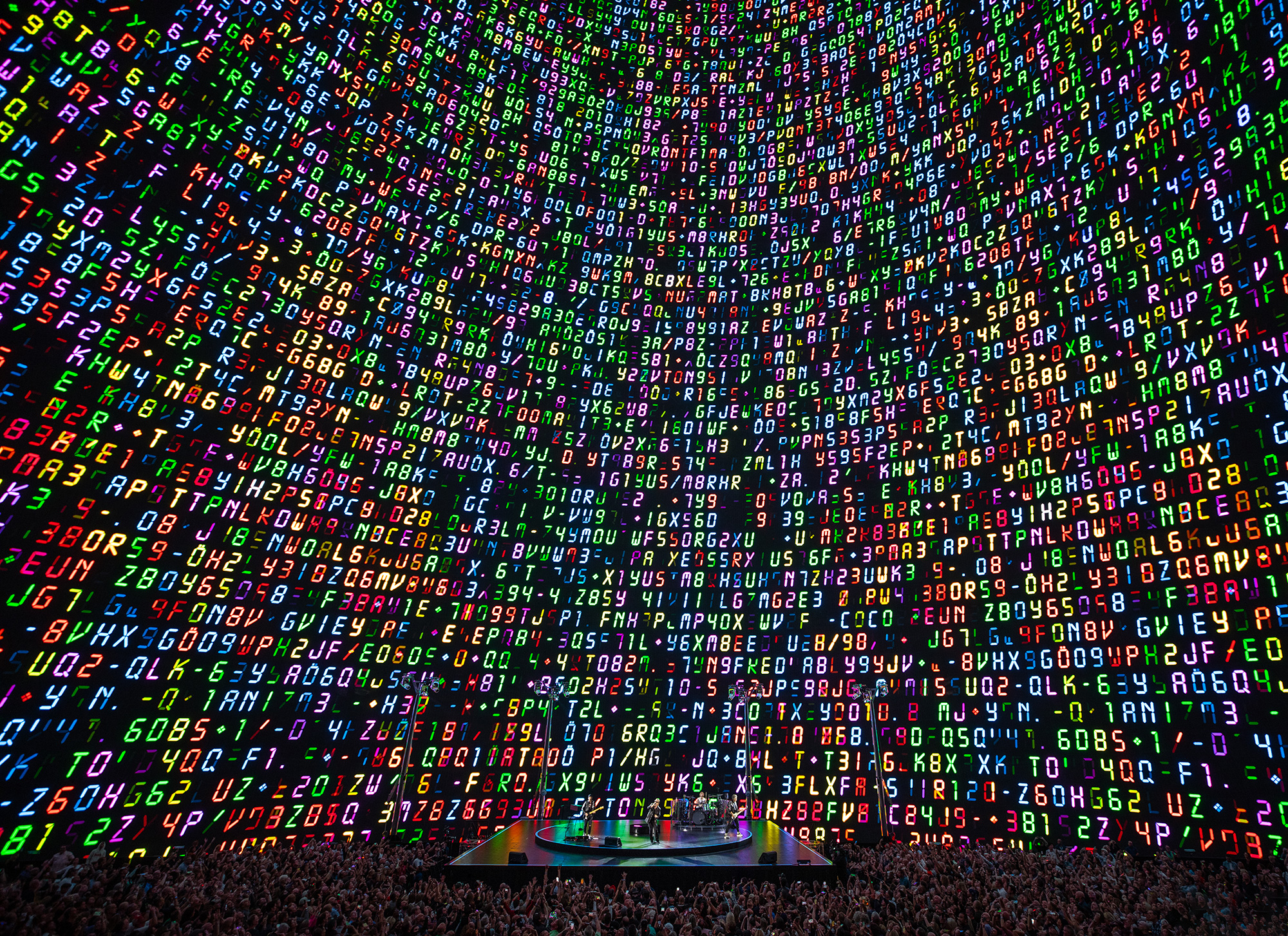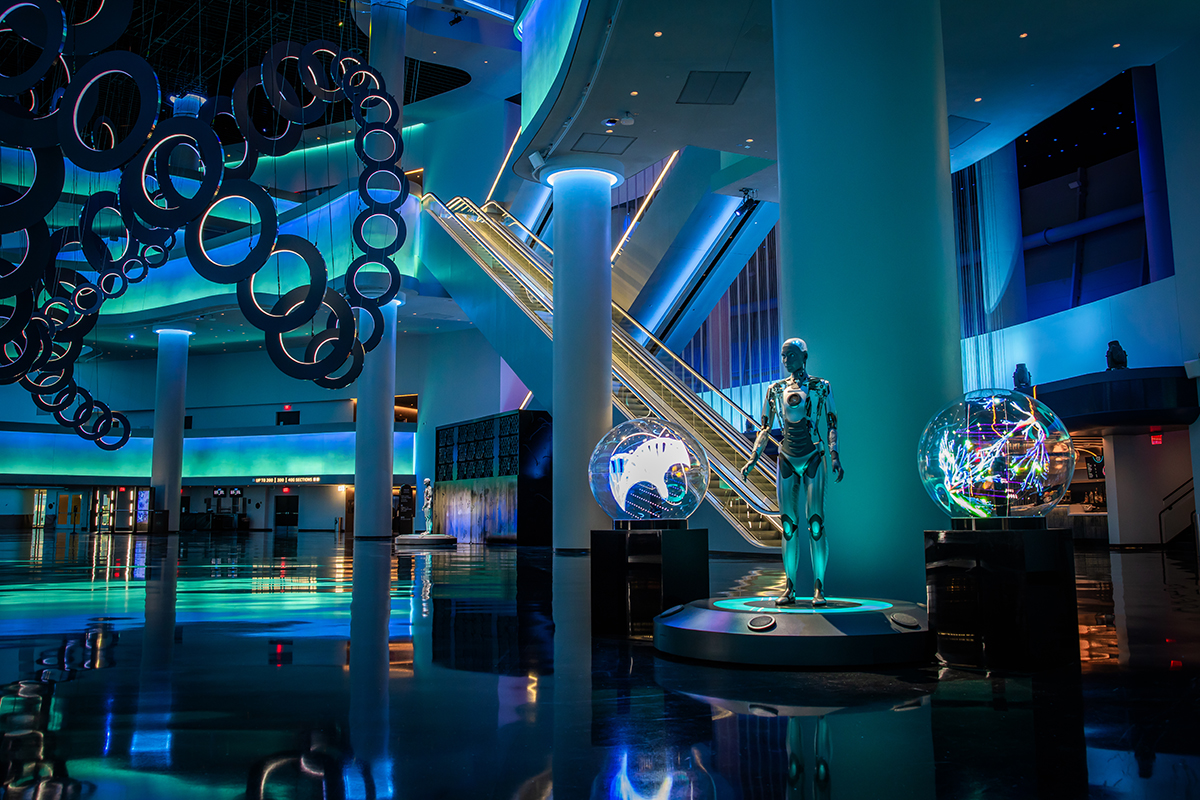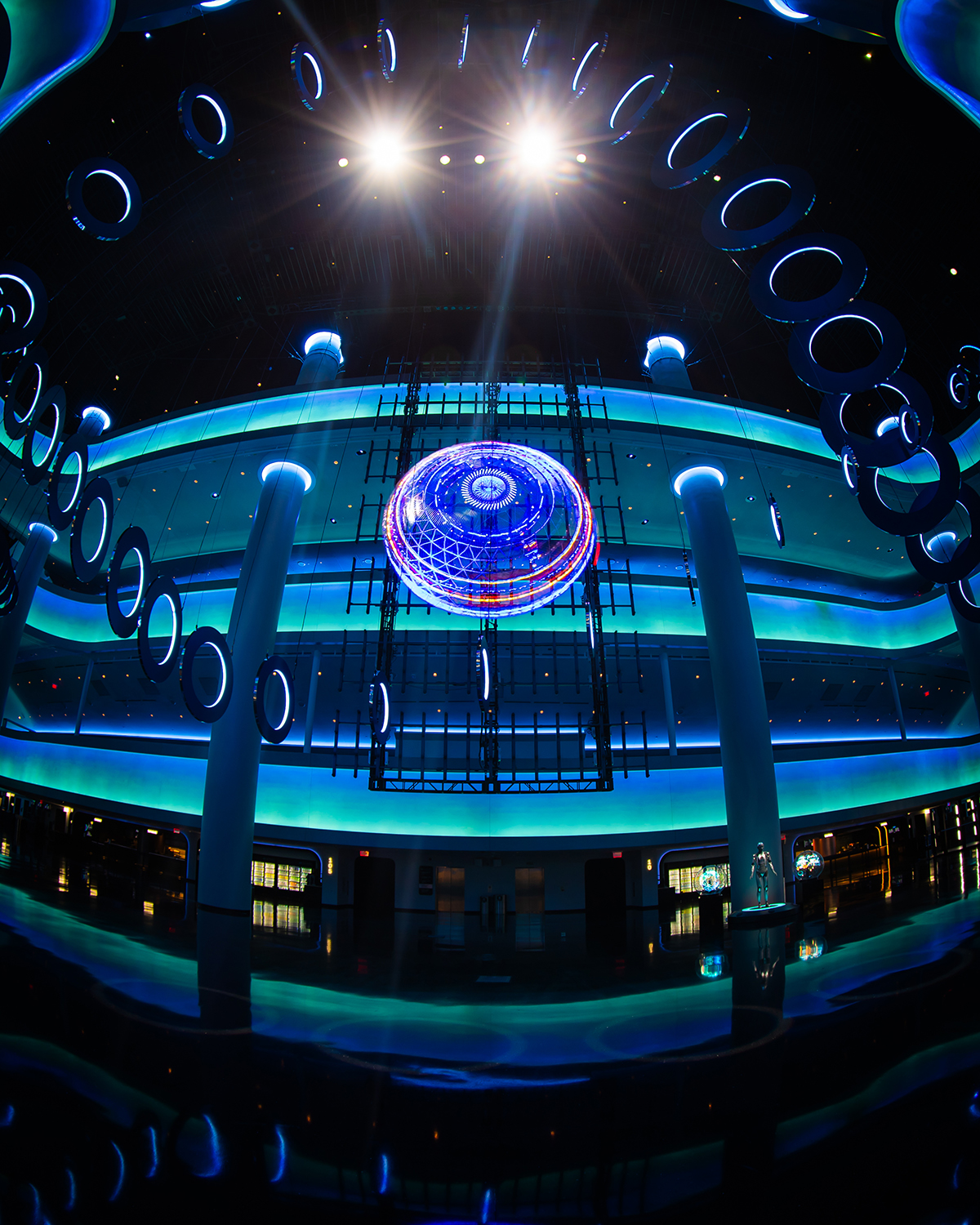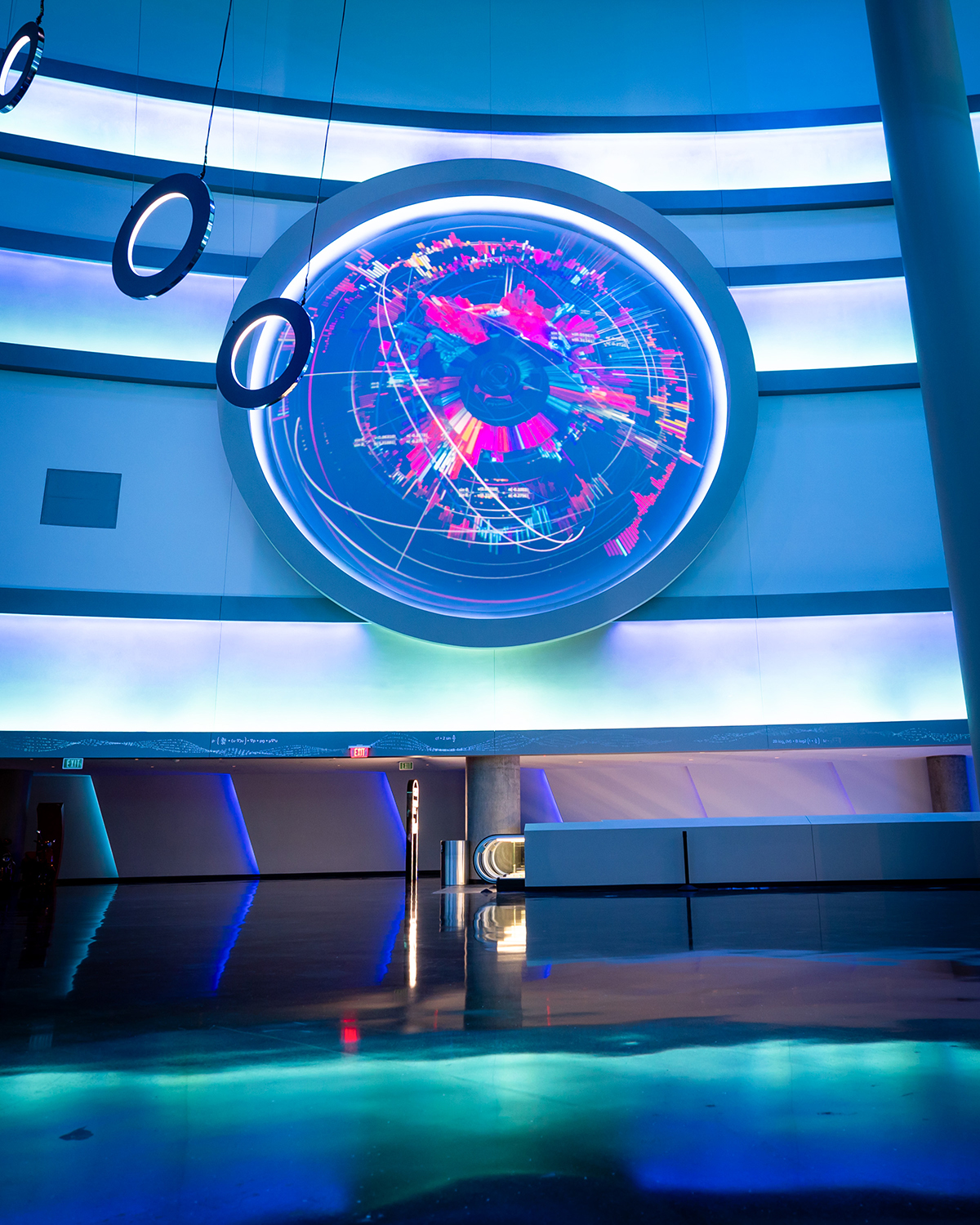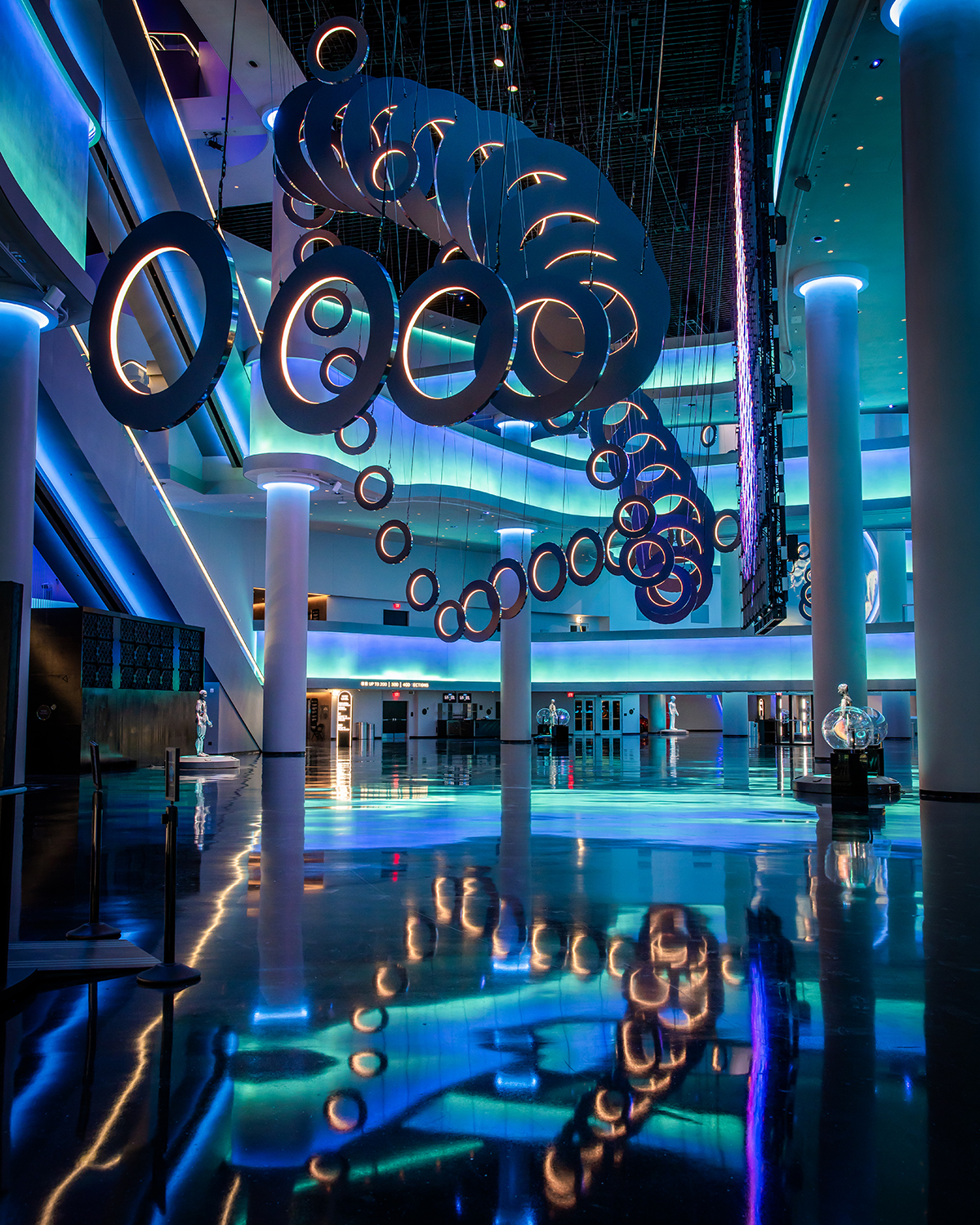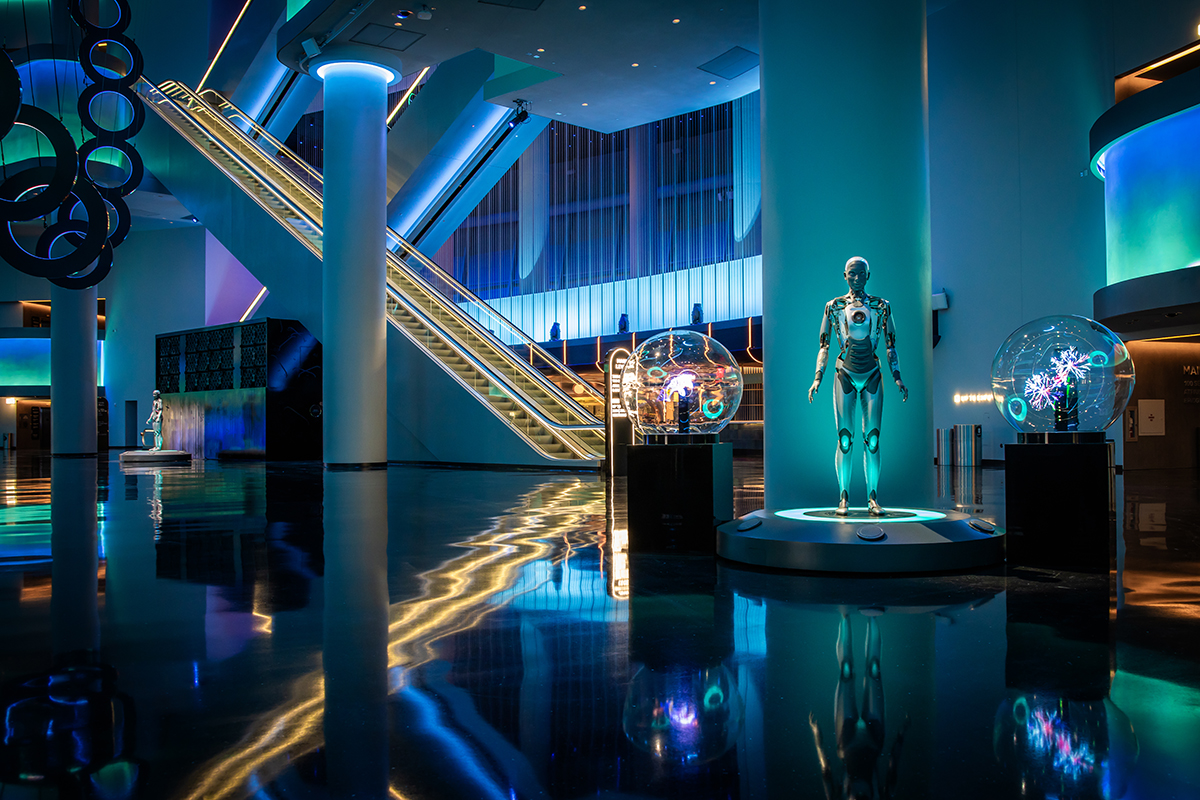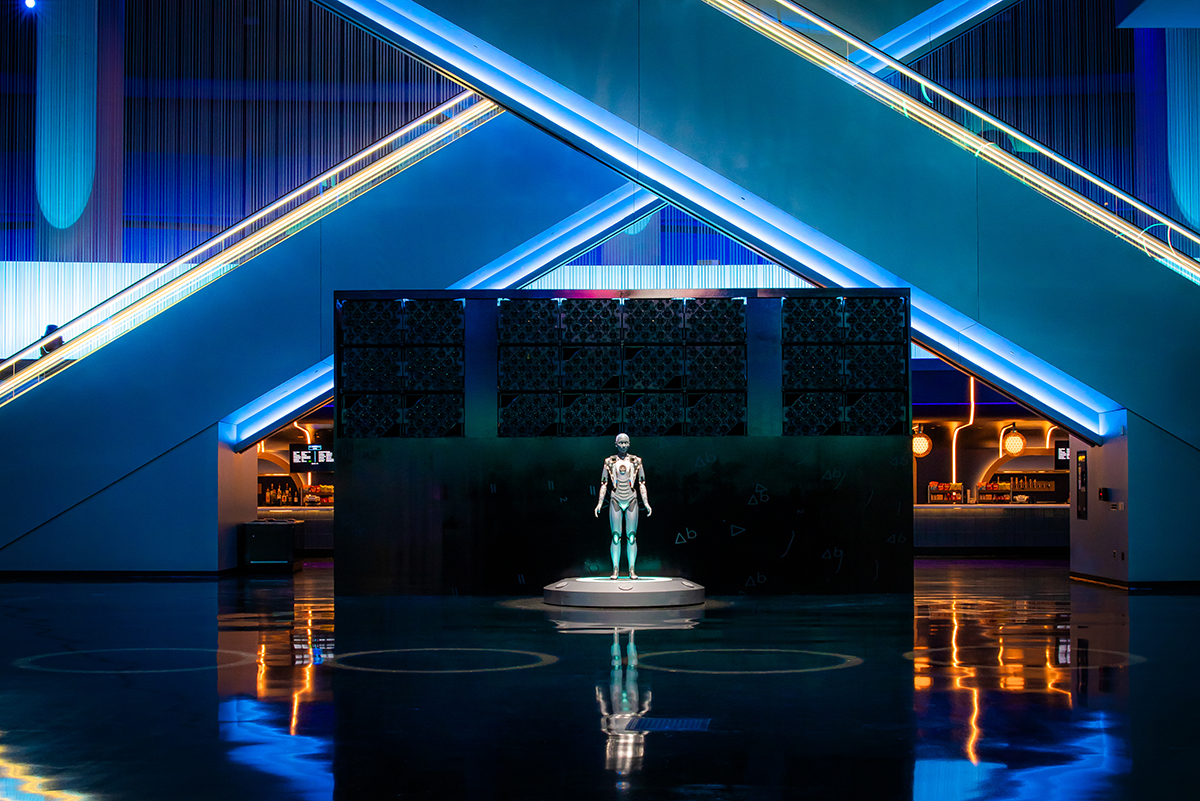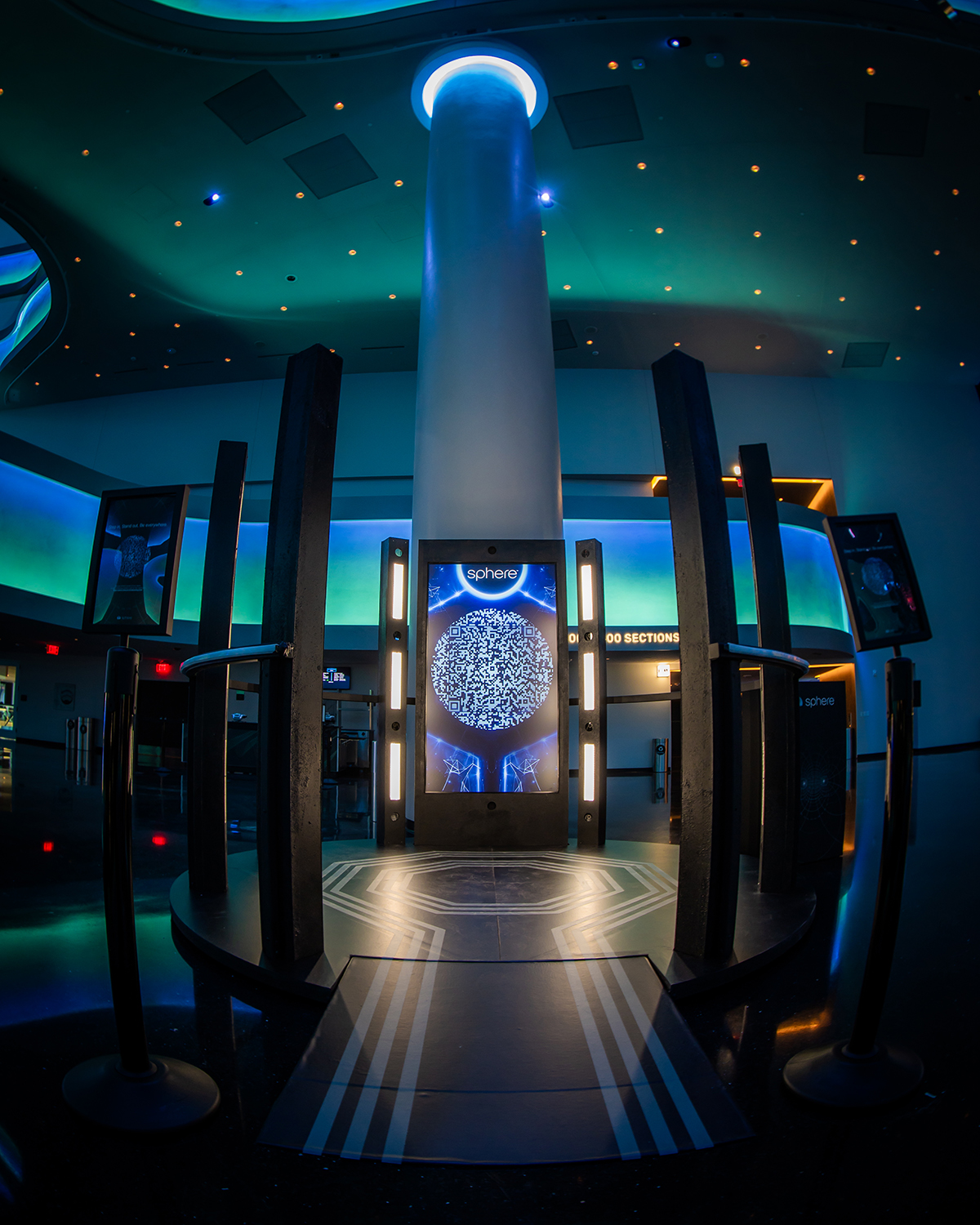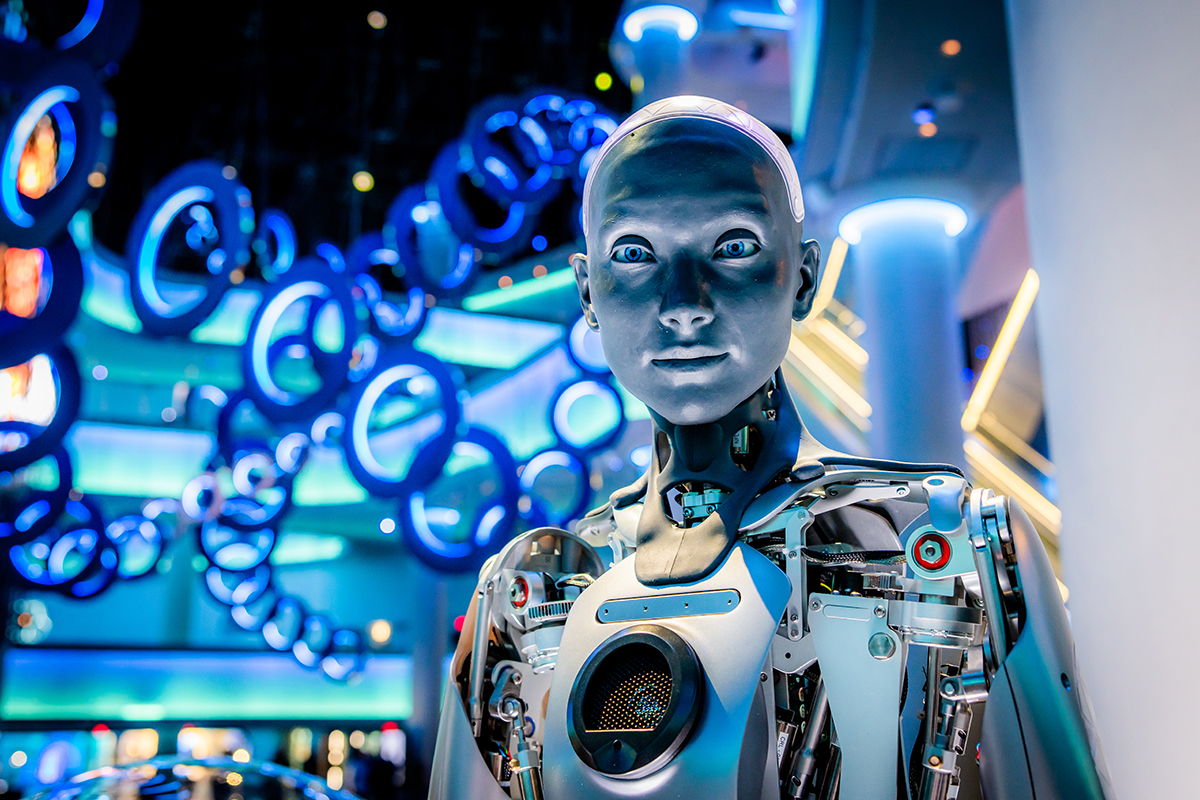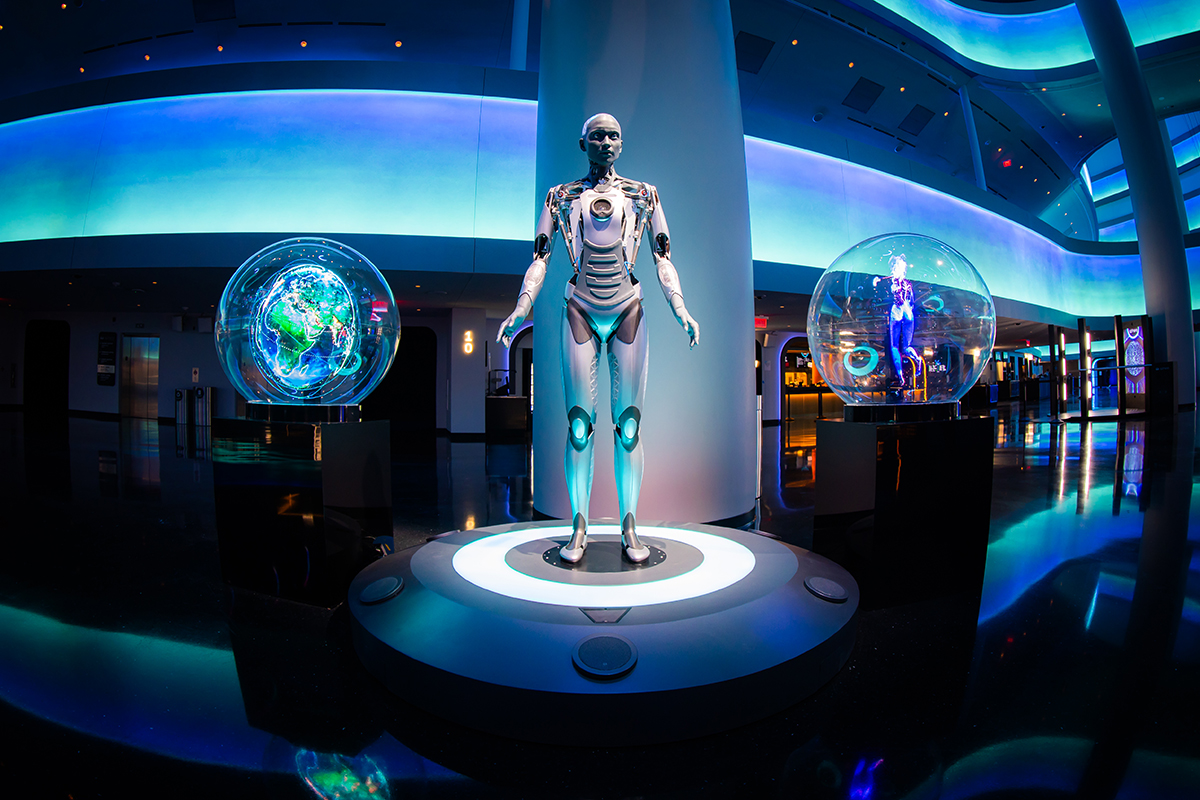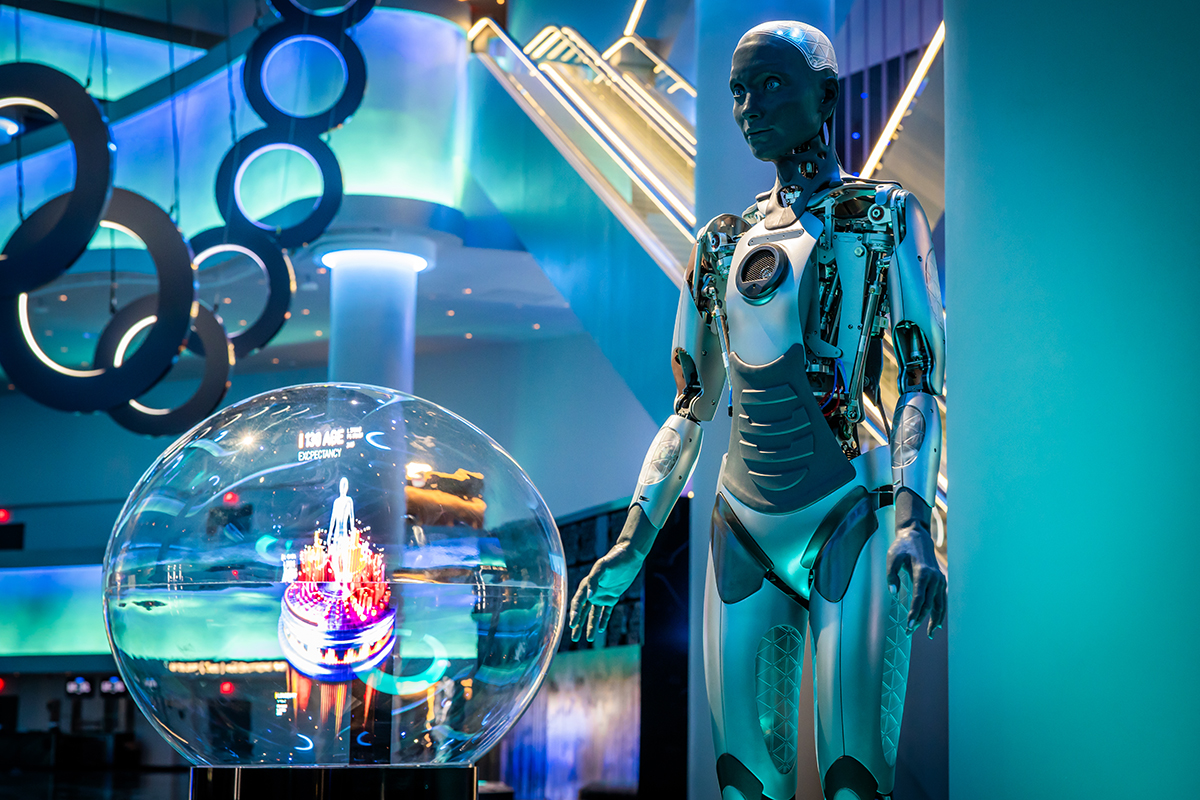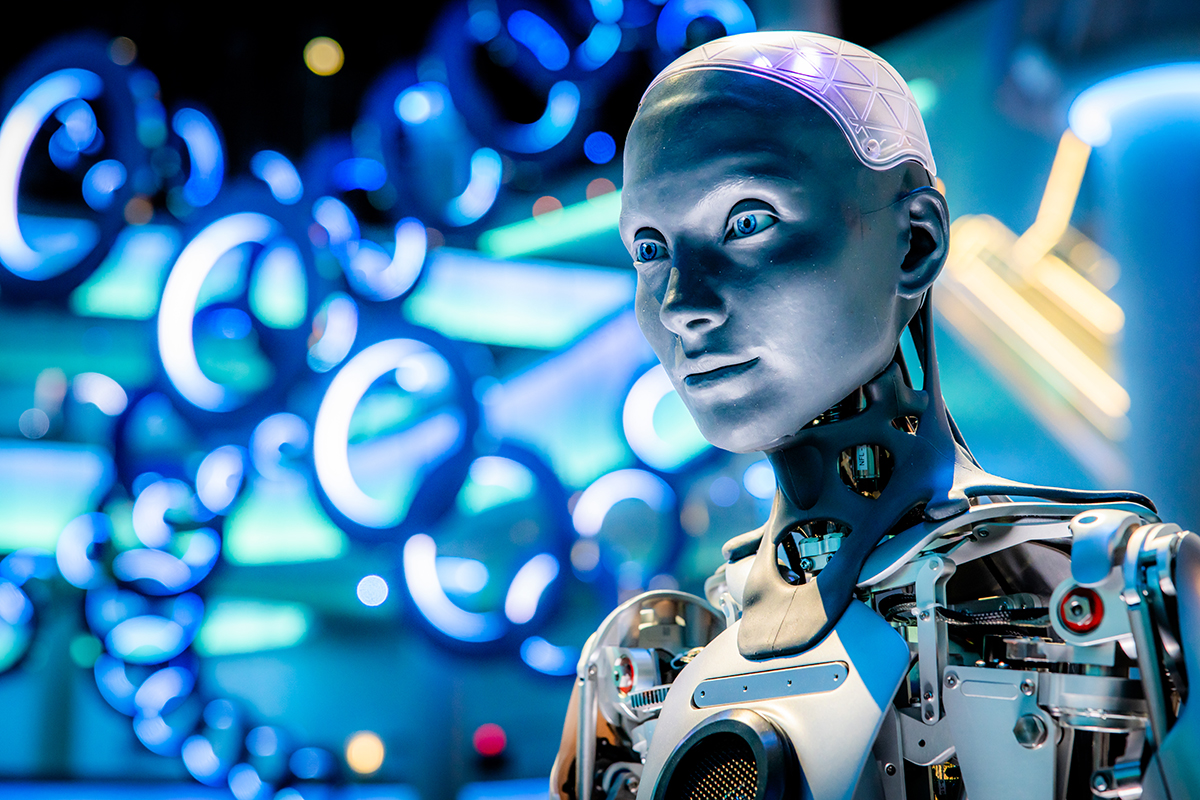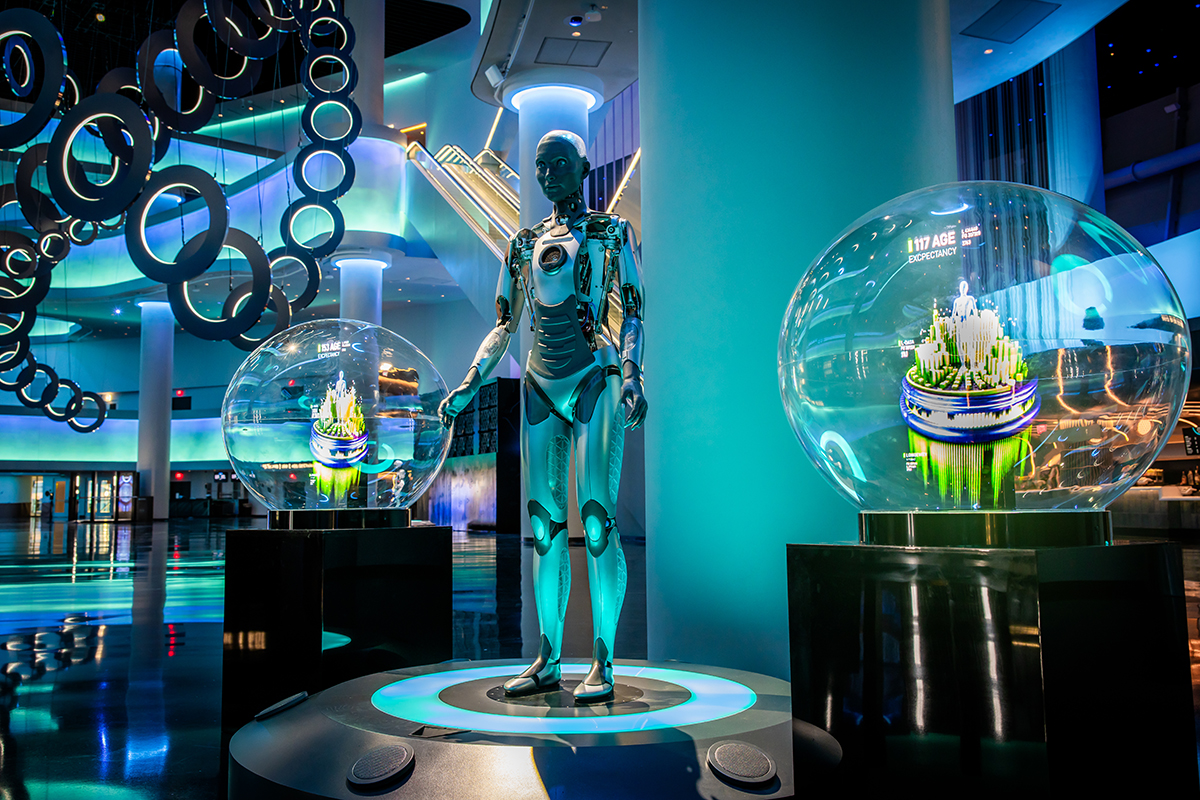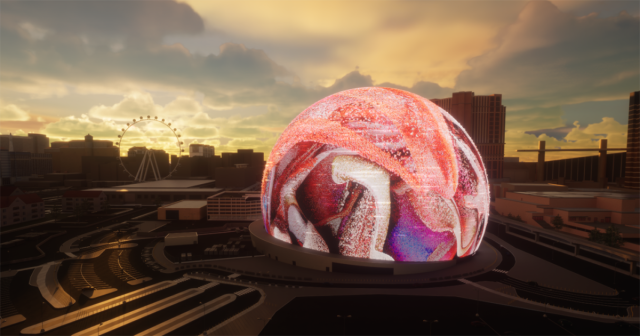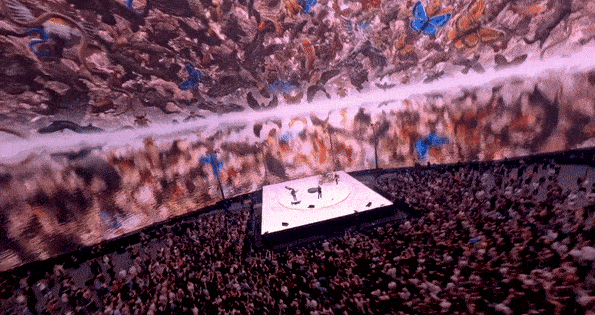
TL;DR
- U2’s residency at Las Vegas’ Sphere opened September 29 and is a multisensory experience that seems to be living up to the critical hype of the new venue.
- MSG Entertainment built its own camera system and a post workflow in order to accommodate its 16K by 16K screen. The company also designed a custom media recorder to capture all that data. And Sphere’s experience wouldn’t be complete without a tailored audio set up: a164,000-speaker audio system that can isolate specific sounds, or even limit them to certain parts of the audience.
- Artist Marco Brambilla’s “King Size” video is also playing during U2’s performance of “Even Better Than the Real Thing.” He used AI to make the highest resolution video collage of all time, dedicated to rockstar Elvis Presley.
- In addition to “U2:UV Achtung Baby Live at Sphere,” the megadome features a short film by director Darren Aronofsky and its Exosphere is covered in a Refik Anadol installation.
U2 debuted its show, “U2:UV Achtung Baby Live at Sphere” September 29 and, writes Rolling Stone’s Andy Greene, “The Sphere somehow managed to live up to years of hype with its dazzling 16K resolution screen that transported 18,600 fans from the stars in the night sky to a surreal collage of Vegas images, the arid deserts of Nevada, and the information overload of Zoo TV.
“And the sound wasn’t the sludgy, sonic assault you typically get at an arena or stadium concert. It is clear, crisp, and pristine, making earplugs completely unnecessary. As advertised, this was a quantum leap forward for concerts.”
U2 Guitarist the Edge told Wired’s Steven Levy that the sound quality is a step above because Sphere ‟was designed with audio in mind, whereas most of the venues we end up playing … were designed primarily for sports, where the sound is a very kind of low priority. It’s really paid off.”
Learn more about U2’s residency here, and watch the band’s performance of “The Fly” from the show here.

Sphere is described by Deluxe SVP of Innovation Richard Welsh as ‟probably the biggest, most elaborate manifestation of all of the technologies that you might experience in a cinema-like environment now, translated to a huge, huge space.”
For more on the technology that enables Sphere, you can watch our video of Welsh in conversation with Eric Cantrell and Roman Sick.
READ MORE: The MSG Sphere: Evolving the Large Scale Immersive Experience
Developers of the 366-foot-tall, 516-foot-wide dome are aiming to reinvent every aspect of the live event experience, and Sphere is the culmination of seven years of work, with a budget that reportedly stretched to more than $2.3 billion (making “it the most expensive entertainment venue in Las Vegas history, beating out the $1.9 billion Allegiant Stadium,” per The Impossible Build.)
Inside, that translates to a venue that can seat 17,600 people; and 10,000 of them will be in specially designed chairs with built-in haptics and variable amplitudes: Each seat is essentially a low-frequency speaker. There’s also the option to shoot temperature- and direction-controlled (or scented!) air at fans.
You can read more about the development of Sphere here on NAB Amplify.
READ MORE: It’ll Be a New (New) Media Experience in the MSG Sphere
In addition to the massive dome and custom seating, MSG Entertainment built its own camera system and a whole post-production workflow, which together comprise a system it calls Big Sky, in order to accommodate its 16K by 16K screen, believed to be the world’s highest resolution. Because this screen “covers almost the entire interior’s curved walls and roof,” The Impossible Build YouTube channel predicts it will be like stepping inside “a real life metaverse.”
The Big Sky single lens camera boasts a t316-megapixel sensor capable of a 40x resolution increase over 4K cameras. It can capture content up to 120 frames per second at the 18K square format, and even higher speed frame rates at lower resolutions.
These special cameras also require custom lenses to do the job, including a 150-degree field of view, which is true to the view of the sphere where the content will be projected, and a 165-degree field of view which is designed for overshoot and stabilization and is particularly useful in filming situations where the camera is in rapid motion or in a helicopter.
Additionally, MSG Entertainment designed a custom media recorder to capture all that data including uncompressed RAW footage at 30 Gigabytes per second with each media magazine containing 32 terabytes and holding approximately 17 minutes of footage.
Sphere’s immersive sphere-ience, err, experience wouldn’t be complete without a tailored audio set up. The 164,000-speaker audio system that can isolate specific sounds, or even limit them to certain parts of the audience was designed by German start-up Holoplot. (That means certain audience sections could listen to a movie in different languages, or even different instruments.)
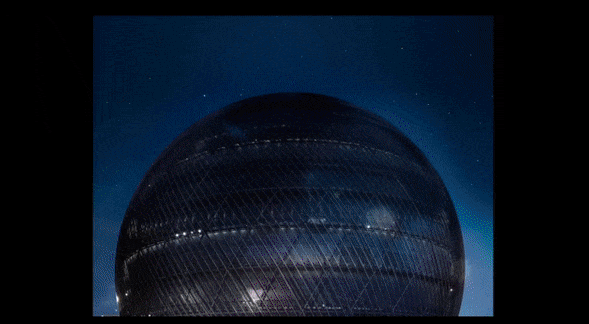
Make Way for the King
“We’re pushing the envelope in the visual area as far as you can. All the artists we worked with have given us incredible material that we feel really connects with our music,” the Edge told Wired. “But in the end, the songs dictate what we put on the screen and what we do as a band in performance.”
For example, artist Marco Brambilla’s “King Size” video is playing at Sphere now through December, during U2’s performance of “Even Better Than the Real Thing.”
Brambilla used AI to make the highest resolution video collage of all time, dedicated to rockstar Elvis Presley. The 16K resolution, AI-generated immersive artwork for the venue’s opening celebrates the king of rock’n’roll with glorious, exaggerated excess.
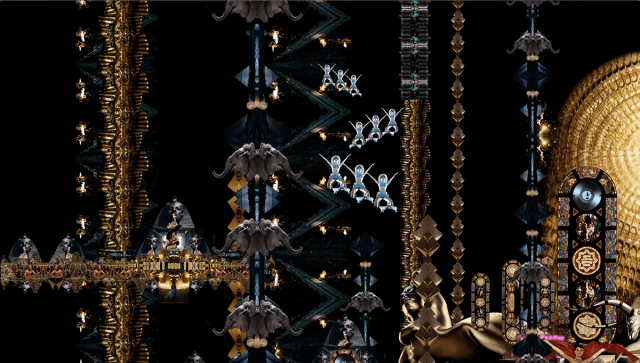
To create “King Size,” Brambilla started out by feeding over 12,000 film samples of Presley’s performances including the 33 movies he starred in into Stable Diffusion. This allowed him to catalog hours of footage and select what he needed with ease. He also utilized a combination of Stable Diffusion and Midjourney to generate “fantastical versions of Elvis” for the short.
“I knew it was going to be something epic and iconic, and I knew it would be odd at the highest level,” Zane Lowe told Apple Music. (Watch the full interview, above.) But Lowe added, “What I didn’t realize though, was that it was going to create such a profound feeling.”
Aronofsky and Anadol
What other content can be seen at Sphere in its debut year?
Director Darren Aronofsky was commissioned to shoot “Postcard From Earth,” the first piece of cinematic content for the Sphere, with the Big Sky camera wielded by Oscar-nominated cinematographer Matthew Libatique. It’s featured now as the marquee show for The Sphere Experience.
“At its best, cinema is an immersive medium that transports the audience out of their regular life, whether that’s into fantasy and escapism, another place and time, or another person’s subjective experience. The Sphere is an attempt to dial up that immersion,” Aronofsky tells Carolyn Giardina.
In another article for The Hollywood Reporter, Aronofsky explained, ‟I wanted to shoot macro shots [for ‘Postcard’] because to present them in 18K to audiences with that level of detail would be something no one’s ever seen before.” (One end result of this aim: jumping spiders. You were warned!)
All told, these intensive captures resulted in ‟a whopping half-petabyte of data,” per THR.
As Wired’s Steven Levy put it: ‟While U2 used the Sphere to create a genuine concert, ‘Postcard’ is more of a mind-stretching theme-park attraction.”
READ MORE: Something in (Around) the Atmosphere: Refik Anadol’s AI Sculpture “Machine Hallucinations”
The Sphere’s interior isn’t the only way to experience groundbreaking content; viewable from parts of the Strip, the Exosphere currently displays an “AI data sculpture” created by Refik Anadol and dubbed “Machine Hallucinations: Sphere.”
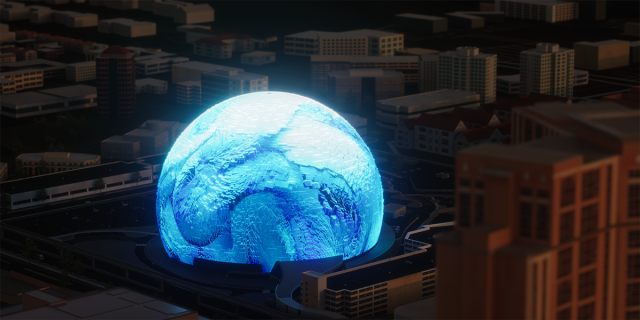
The Exosphere is covered with nearly 580,000 square feet of fully programmable LED paneling, creating the largest LED screen in the world. The paneling consists of approximately 1.2 million LED pucks, spaced eight inches apart. Each puck contains 48 individual LED diodes, with each diode capable of displaying 256 million different colors.
With the Sphere, Jesus Diaz writes for Fast Company, “the building is the canvas — a bland engineering marvel that transforms into something visually arresting once Anadol gets his hands on it.”



